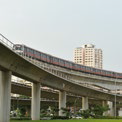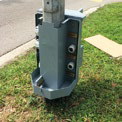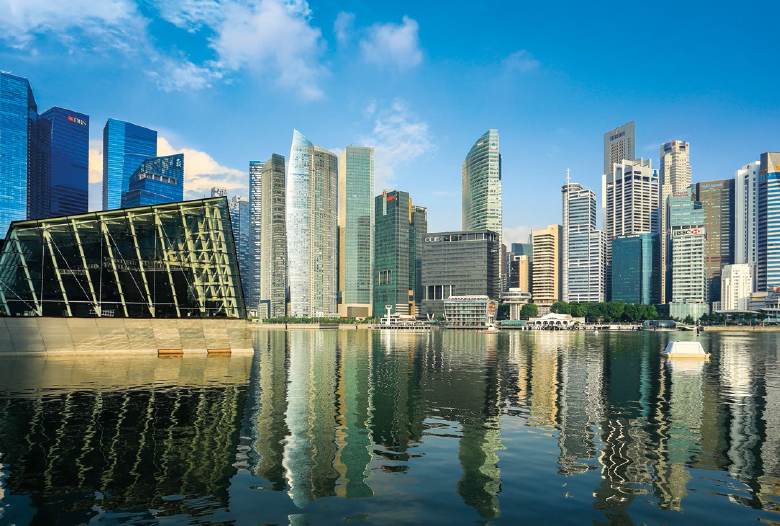“For Singapore, what we want is for technology, networks and data to be used intelligently to deliver benefits to the society. Government plays the role of an enabler and catalyst by putting in place the infrastructure, policies, and enablers.”- Smart Nation Programme Office


“For Singapore, what we want is for technology, networks and data to be used intelligently to deliver benefits to the society. Government plays the role of an enabler and catalyst by putting in place the infrastructure, policies, and enablers.”- Smart Nation Programme Office

What is a Smart Nation, and why do we need to become one?
Singapore faces key challenges in the years ahead: an aging population, urban density, and traffic congestion on limited land space. Not to mention the country needs to keep pace with the world. The Smart Nation initiative is one way the government is addressing these challenges. It wants to turn the entire country into a giant data and analytics center, with reports harvested through next-generation sensors and networks, and channels of digital communication opened between agencies and individuals. A smart city isn’t a new idea. However, a smart nation is something new, and as a city-state, Singapore is in a unique position to achieve it. It this sounds like heady stuff, it is. Smart Nation cuts across all Singapore government agencies, like the Urban Redevelopment Authority (URA), Housing and Development Board (HDB), and the Land Transport Authority (LTA), with the Smart Nation Office in the Prime Minister’s Office acting as a coordinating agency. The IDA (Infocomm Development Authority of Singapore) and partner agencies have worked with over 20 companies to use the Jurong Lake District as a test bed for new technologies, like smart park lighting, driverless buggies and HetNet (Heterogeneous Network). HDB and IDA have implemented a small-scale trial of smart devices in the Yuhua public housing estate, like an elderly monitoring system and utilities management system. Apps have been released under the Smart Nation banner (see the list on the right). In the later half of 2016, the IDA and MDA (Media Development Authority Singapore) will restructure to form two new organizations, the Info-communications Media Development Authority of Singapore (IMDA) and Government Technology Agency (GovTech). GovTech is expected to be the key agency to drive the Smart Nation initiative in the years to come.
Key tech powering Smart Nation

HETNET
Short for ‘heterogeneous network,’ a HetNet (in the case of mobile networks) is a network that can provide seamless service when switching between Wi-Fi and cellular networks. HetNet enables connectivity in more places, including locations that are difficult for mobile signals to reach. This opens up connections not only for mobile users, but also for networked sensors. HetNet trials are now on at Jurong Lake District.

IOT
The Internet of Things (IoT) refers to a network of physical devices connected to and exchanging data on a network. These sensors can provide real-time data, like air quality and traffic conditions. A pilot project has installed monitoring sensors in elderly residents’ homes in YuHua housing estate, to alert family and neighbors if an individual stops moving.

AG BOXES
AG (Above Ground) boxes are all-in-one containers, with power and connectivity for sensors and servers. A single box features 100Mbps enterprise-class fiber lines for quick internet access, and has room for multiple data sensors. AG Boxes ease the deployment of sensors with various hardware requirements, and facilitate the IoT network. They are now on trial in the Jurong Lake District.

DATA
Ultimately, what AG Boxes, IoT and HetNet all facilitate is the quick exchange of data. You can think of the massive amount of data in Smart Nation as belonging to two groups, one shared, and one not. Open data is being publicly shared on the website data.gov.sg, where it’s free for anyone to use. One of the goals for Smart Nation is to develop the Smart Nation Platform; a single shared data communication platform for the government, and this data will not be shared publicly.

SMART CITIES, BETTER CITIES?
The smart city’s time has come, but that doesn’t mean everybody will automatically benefit.
People have been trying to fuse technology and urban design to create better cities for ages. The earliest cities grew organically, but cities in the third millennium BC already showed signs of intentional planning. So the idea of a smart city isn’t something new as much as it’s something upgraded — a city that isn’t just planned, but better planned as a result of using modern information and communication technology. You could say that the smart city idea is now ripe for its time, with the prevalence of smartphones, Internet connectivity, cheap sensors and the technology to manage big data. The idea has certainly spread, with various countries around the world like Singapore, South Korea and the Netherlands driving their own smart city initiatives. Even major tech companies are also getting into urban design. Y Combinator, the startup incubator behind companies like Airbnb, Dropbox and Reddit, recently revealed a new research project for building better cities. Amazon, IBM and AT&T are participating in smart city challenges in the United States. But there are four major challenges facing cities as we rush towards this dream of intelligence. The first is how the benefits of technology can only be reaped if you have access to and know how to use it. The smart city reality will soon be one whereby harvesting you as a data point will be by default, for example, if you’re part of the long queue that’s waiting for a bus. But benefitting from this collection will be by opt-in, for example, if you have or don’t have access to the app that tells you where you can catch an alternative bus. The second is how a more technologically advanced city is not automatically a better city to live in. The United Nations’ World Happiness Report for 2015 ranked Switzerland as the happiest country in the world. In contrast, some of the most technologically advanced countries in the world, like Japan, South Korea and the United States, didn’t even make it into the top five.

The third is to understand the complexity of metrics. Installing broadband wireless throughout a city with masses of sensors is actually the easier part; how to understand the data and create a higher quality of life from it is the tougher follow-up. If we discover that a certain section of a bus route is especially busy during rush hour (as Singaporeans already can on the Data.gov.sg website), we can THINK conclude that one solution is to increase the numbers of buses during this section to ease busloads. So who’s incentivized to do that, and more importantly, who pays for it? The fourth is privacy and security. While collecting data on overall road traffic might not be a real privacy issue, it might be if cities start tracking cars individually, as Singapore as plans to do with its satellite based road pricing system. Should this data be collected in the first place, and if it is, how will it be guarded so that it’s not readily hacked? Nobody would argue that less information is better than more, and that a less connected city is better than a well connected one. The devil, however, is in the details, and it behooves us to develop a smart city, smartly. In the past, urban planners argued whether the best cities were designed or organic, and history has provided successful as well as failed examples of both. In the future, we might have a third alternative — a planned city that’s grown out of the organic collection of data. If this future city can solve problems of inclusion, quality of life, comprehension and security, then perhaps we can call it a smarter city, not just a higher tech one.























